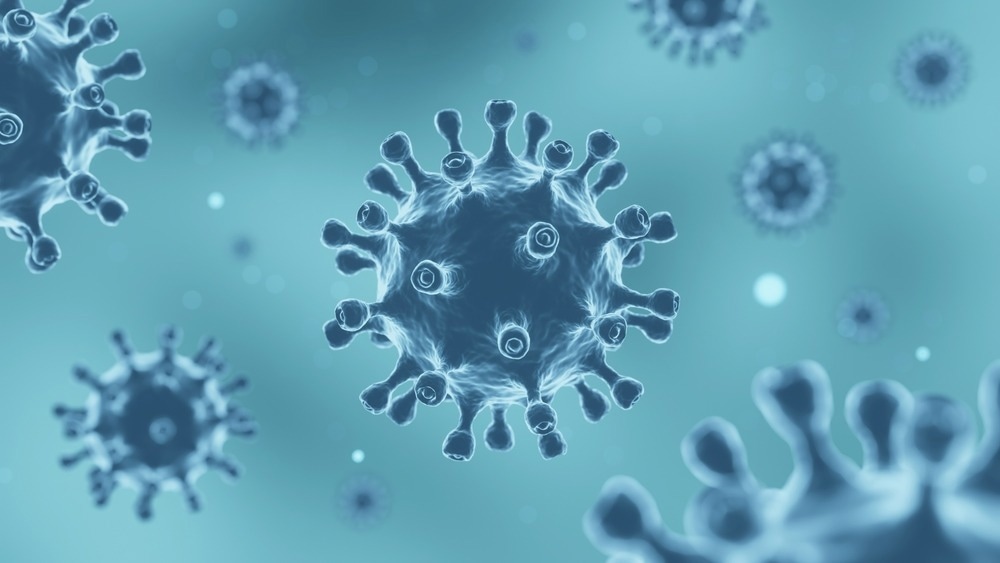In a recent study published in Scientific Reports, researchers performed a structural bioinformatics analysis to evaluate the binding energy of the severe acute respiratory syndrome coronavirus 2 (SARS-CoV-2) Omicron variants of concern (VOC) spike (S) protein receptor-binding domain (RBD) to human angiotensin-converting enzyme 2 (hACE2) receptor compared to other VOCs.
 Study: Structural bioinformatics analysis of SARS-CoV-2 variants reveals higher hACE2 receptor binding affinity for Omicron B.1.1.529 spike RBD compared to wild type reference. Image Credit: Puwadol Jaturawutthichai/Shutterstock
Study: Structural bioinformatics analysis of SARS-CoV-2 variants reveals higher hACE2 receptor binding affinity for Omicron B.1.1.529 spike RBD compared to wild type reference. Image Credit: Puwadol Jaturawutthichai/Shutterstock
Background
The continual emergence of novel SARS-CoV-2 VOCs has increased global health concerns and warrants expansion of the therapeutic landscape of coronavirus disease 2019 (COVID-19) based on structural analysis of SARS-CoV-2 VOC evolutionary characteristics. In a previous study, the authors had reported increased hACE2 binding by the Iota (B.1.526) variant under monitoring (VUM) that contained an S477N/G mutation in its S RBD.
About the study
In the present study, researchers expanded their previous analysis by assessing the impact of mutations in Omicron S RBD (that also contains the S477N mutation) on the binding affinity for hACE2.
Bioinformatics-based structural analyses were performed, including a qualitative assessment of VOC hydrophobicity and electrostatics and with molecular dynamic (MD) simulations for developing an accurate empirical scoring function (ESF) method similar to the LIE (linear interaction energy) method for evaluating the binding energies of SARS-CoV-2 VOCs.
To analyze the VOC structures comprehensively, a three-stage (initial, subsequent, and final stages) approach was used. In the initial stage, SARS-CoV-2 genomes obtained from the GISAID (global initiative on sharing all influenza data) database and sequences provided by laboratories were analyzed.
Of SARS-CoV-2 genome sequences (n=5,799,116) and SARS-CoV-2 S sequences (n=5,649,261) available in the GISAID database, 5,173,253 S RBD sequences were extracted for the analysis by 6 December, 2021. Mutations or amino acid (aa) substitutions in SARS-CoV-2 S RBD with clinical relevance to binding energies were identified.
In the subsequent phase, the team searched for sequences with ≥1 mutation not previously investigated. If such a sequence was identified, the sequence was submitted for structural modeling analyses based on Catalophore Halo technology, the findings of which were used for estimating the potential impacts of such mutations on the development of anti-SARS-CoV-2 drugs.
In the final stage, VOC RBD Halos were compared to the ancestral strain/wild-type (WT) Halo. If there were considerable changes in the Halo comparisons, the novel variant was exposed to ESF-based MD modeling analyses for estimating the corresponding changes in binding affinities for hACE2.
Results and discussion
Among SARS-CoV-2 genomic sequences, 7,700,325 mutations were identified, amounting to 0.7% of all amino acid residues. Compared to the August 2020 study results wherein 185 amino acid substitutions were identified among 73,042 S RBD sequences, the mutational counts observed in the present study were 588-times greater, indicative of the evolution of SARS-CoV-2.
In particular, a significantly greater number of mutations (n=7,451,124) were identified in the RBM (receptor-binding motif) within the S RBD, corresponding to two percent of residues. RBM mutational counts were 1547-fold greater than those observed in August 2020 (n=73,042).
Of the total number of RBM and RBD sequences identified (n=5,173,253 sequences), 85% contained ≥1 mutation. In the Omicron VOC structure, 15 mutations were identified in the S RBD, of which ten mutations occurred in RBM, a mutational count ≥3-fold greater than previous VOCs in the region. Further, six Omicron S RBD mutations (N440K, K417N, T478K, S477N, N501Y, and E484A) co-occurred in other SARS-CoV-2 VOCs, of which the S477N, N440K, N501Y, and T478K mutations have been reported to potentially enhance SARS-CoV-2 S binding affinities for hACE2.
In addition, of the remaining nine Omicron S RBD mutations (S371L, G339D, S375F, S373P, G496S, G446S, Q498R, Q493R, and Y505H), potential impacts of Q493R, Q498R, and G339D mutations in enhancing binding affinity for hACE2 have been reported in previous in vitro or in silico studies. Of note, Halo difference point cloud analyses showed the greatest influence on the S RBD-hACE2 binding site for Omicron compared to previous VOCs.
ESF analyses showed that the binding affinity of Omicron for hACE2 was 7.7-fold greater than that of the SARS-CoV-2 WT and the greatest among all VOCs except the Alpha VOC. The structural profile of Omicron was related to a combination of the Beta VOC and the Delta VOC with more alterations at the N440K mutation site and mutations such as S371L, G339D, S375F, S373P, N440K, K417N, S477N, G446S, E484A, G496S, Q498R, Q493R, Y505H, and N501Y were present only in the Omicron VOC.
At the interface of the Omicron S RBD- hACE2 binding, replacement of glutamine by arginine was observed at position 493, yielding novel and robust hydrogen bonding for the E35 amino acid of hACE2. The lower binding affinity of Omicron (and higher immune-evasiveness) than Alpha can be due to the presence of the K417N mutation in Omicron that disrupts salt bridges to D30 of the hACE2 receptor. On the contrary, the N501Y (an important residue for hACE2 binding) locally increased hydrophobicity in Omicron (and in the Alpha VOC, Beta VOC, and Gamma VOC).
Conclusion
Overall, the study findings showed higher hACE2 receptor binding affinity for Omicron S RBD compared to the SARS-CoV-2 WT strain and underscored the importance of continued evolutionary analyses and structural assessments to develop updated SARS-CoV-2 vaccines.